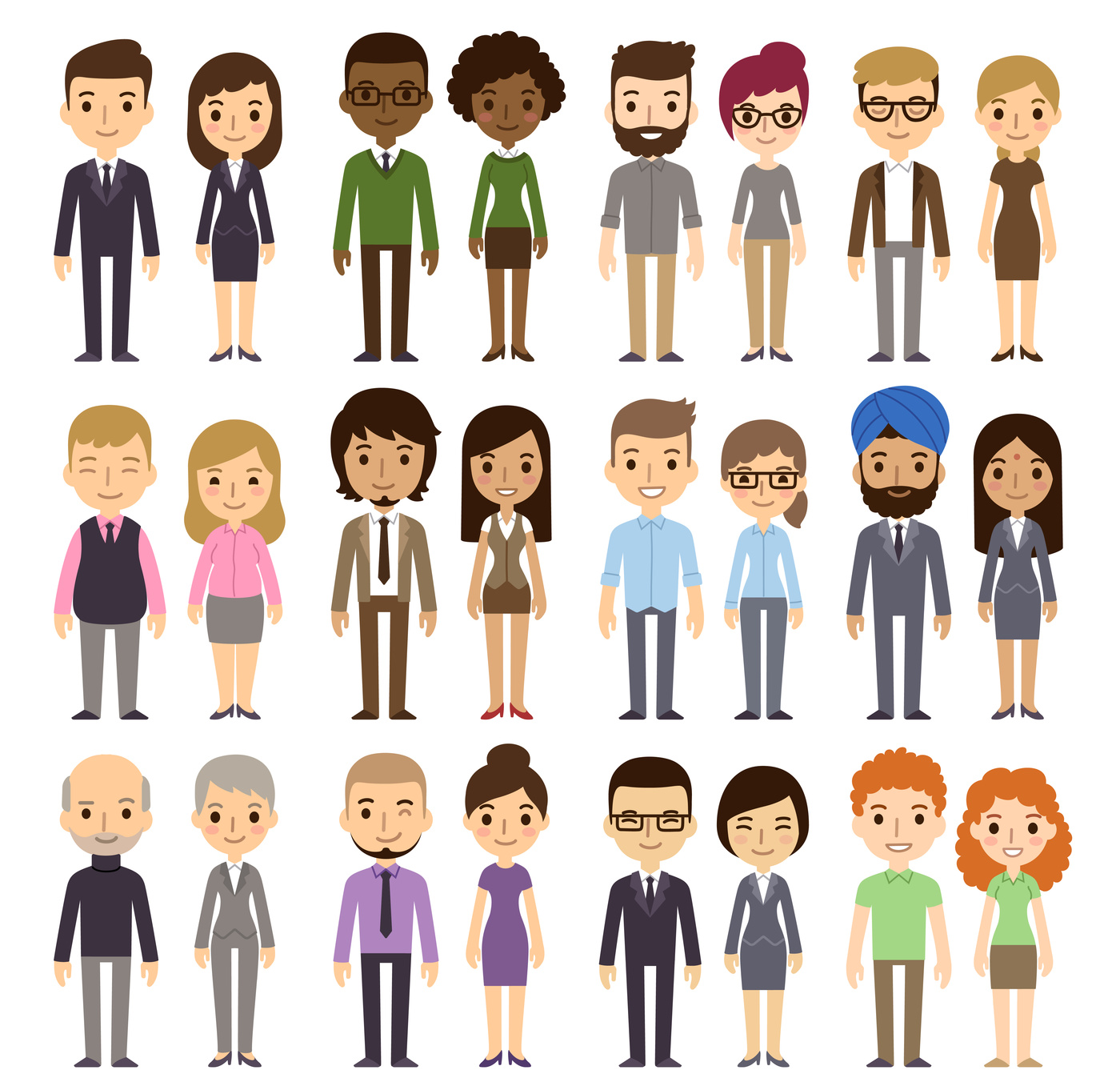Diversity at the workplace is a very personal subject to me. The definition of the word diversity in Google is “a range of different things.” I consider myself a diverse individual because I am an Asian woman, immigrant with an accent, Muslim in a hijab, a mother of kids with food allergies and a spouse in an interracial marriage. If you Google the diversity chart you will find an image with different dimensions of diversity, I belong to more than one dimension on this chart, I am one person with a combination of many diverse characteristics. I am not unique; every single person represents not one but many slices on the diversity chart.
Diversity is not just one thing. It is a variety of things, a combination and a range of different things.
Diversity Collegium, a think tank of diversity practitioners, members Julie O’ Mara and Alan Richter define diversity as “ the variety of similarities and differences among people, including but not limited to, gender, gender identity, ethnicity, race, native and indigenous origin, age, generation, sexual orientation, culture, religion, belief system, marital status, parental status, social-economic difference, appearance, language and accent, disability, mental health, education, geography, nationality, work style, work experience, job role and function, thinking style and personality type.”
However, when it comes to measuring workplace diversity the metrics are not inclusive of all characteristics described in the definition above, most diversity reports are based on gender, race, age, sexual orientation and belief system. Culture Amp, a company that is developing a better model to measure diversity and inclusion, voiced in the article “traditional diversity metrics don’t work” by Stephen Huang, the same metric limitations of measuring diversity and inclusion. However, this limited diversity metric system continues to be utilized in almost all diversity and inclusion reports, assessments and research conducted by newspapers and social media outlets.
Diversity metric system currently used in diversity reports are limited.
This metric simply focuses on how many people of each mentioned group are represented in the makeup of the company’s workforce. This system is useful in understanding the subject of diversity as a basic score card of workforce representation.
Workforce Representation described by Roosevelt Thomas Jr. in his 2010 book World Class Diversity Management. A Strategic Approach, as managing representation in this way, “In the spirit of the civil rights laws and civil rights movement, those senior managers sought to remove barriers to having descendants of slaves involved (represented) in their organizations. They thought this representation not for the sake of diversity or the benefit of the organizations, but rather to make amends for past injustices.” This is a widely accepted explanation of historical background for workforce representation in the United States context.
Examples of representation strategies are focused recruitment, increasing pipeline of minority applicants and other approaches such as the Rooney Rule. The Rooney Rule is a National Football League policy that requires league teams to interview minority candidates for head coaching and senior football operation jobs. The rule was established in 2003, and was named after Dan Rooney, the former chairman of the league’s diversity committee.
If companies continue to view diversity with the same historical justice lens and focus on representation they will for a time satisfy diversity metrics. Will the job of diversity office be done once certain numbers are met? No, not according to Janet Manuel, a Director of Pittsburgh Partnership, and a Deputy Director of Personnel and Civil Service for the City of Pittsburgh.
In an interview this past mid-July , director Manuel, emphasized the importance of inclusion at a work place. Janet noted that City of Pittsburgh seeks in their employee pool talents from all diverse backgrounds and experiences, open minded individuals who can work with and perform in a diverse workplace. Janet says diversity is here, the changing demographics in nation and in the City of Pittsburgh demonstrate the need for an inclusive workplace who can meet the demands and needs of all groups.
How to achieve retention of diverse workforce?
Melanie Harrington who is the president and CEO of Vibrant Pittsburgh, an economic development organization, in her interview with Penn Live in January 2016, said “This will require strong leadership, a willingness to act in the face of potential failure, and the courage to self-correct and forge ahead with latest information learned from past efforts. The diversity issues that challenge our communities require long-term, tenacious commitment.”
This can start with making honest assessment of organizational culture, existing programs for advancement and network systems and infrastructure. The following guidelines for diversity retention are advised by HCareers, the leading hospitality career resource for those seeking hospitality employment and those looking to hire to talent
- Walk the talk. …
- Develop diversity-friendly programs and support initiatives. …
- Tap diverse candidates for leadership training and development. …
- Keep the lines of communication open. …
- Make your commitment to diversity a selling point
Below are examples of what it may look like for business planning to move from “talking the talk” to “walking the talk”; company pays attention if they are able to welcome nursing women into their workplace, by considering spaces for lactation rooms and allowing employee flexible work schedule. Another example, company should look into current conference food and drink suppliers and ask if they are able to address different dietary or religious restrictions; be honest about company ability to provide a prayer space to accommodate different religious groups, or change existing bathrooms to make them gender friendly, assess if company culture is welcoming, if employees are friendly and talk with each other and are satisfied with work place, and if members of existing minority have been afforded advancement options.
Representation strategy focused on diversity will not work if new recruits will leave, and outreach efforts will not result in retention.
Organizations with ability to create programs on communicating inclusive values, such as celebrating differences, making employees feel they belong and recognized for their contributions towards company goals will continue to succeed and stay ahead.
Our country is changing, the workplace of tomorrow will look very different and diverse. Our world is more global than ever before, with customer needs for products and services being as diverse as ever.
For diversity to work I believe leadership must make employee satisfaction at workplace a priority. Employee experience tells a story of the workplace. Experience will shift the focus from us being different, to us being a part of community. It shifts conversation from diversity to inclusion, which is defined by Alan Richter as “a dynamic state of operating in which diversity is leveraged to create a, fair, healthy and high performing organization and community. An inclusive environment ensures equitable access to resources and opportunities for all”.
Creating inclusive environment for all changes philosophy from different to a message of respect and dignity without ties to gender, age, and other traits. Which means when I am considered for a job, I am not filling a quota for company’s diversity metric, I am a potential employee with talents, experience and different skill sets. A potential employee who deserves a workplace which treats everyone as humans, as equals with dignity and respect.





